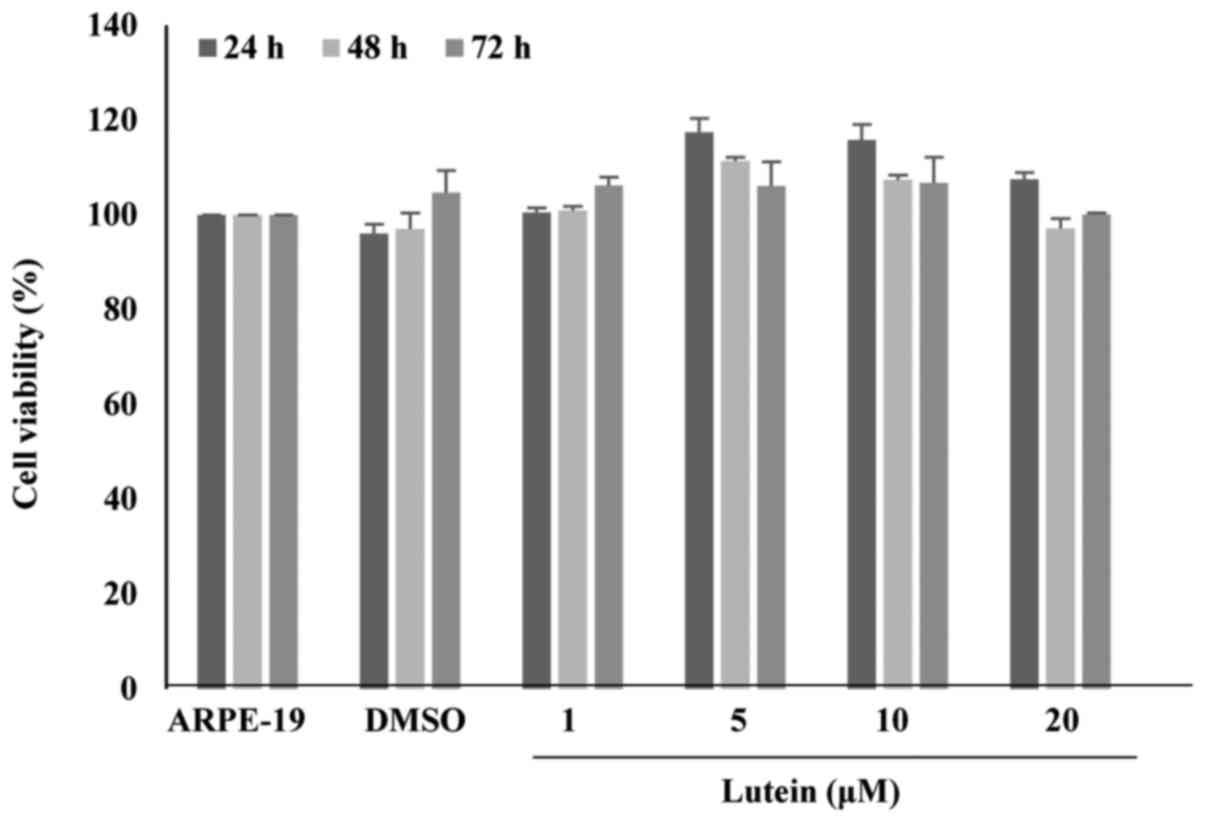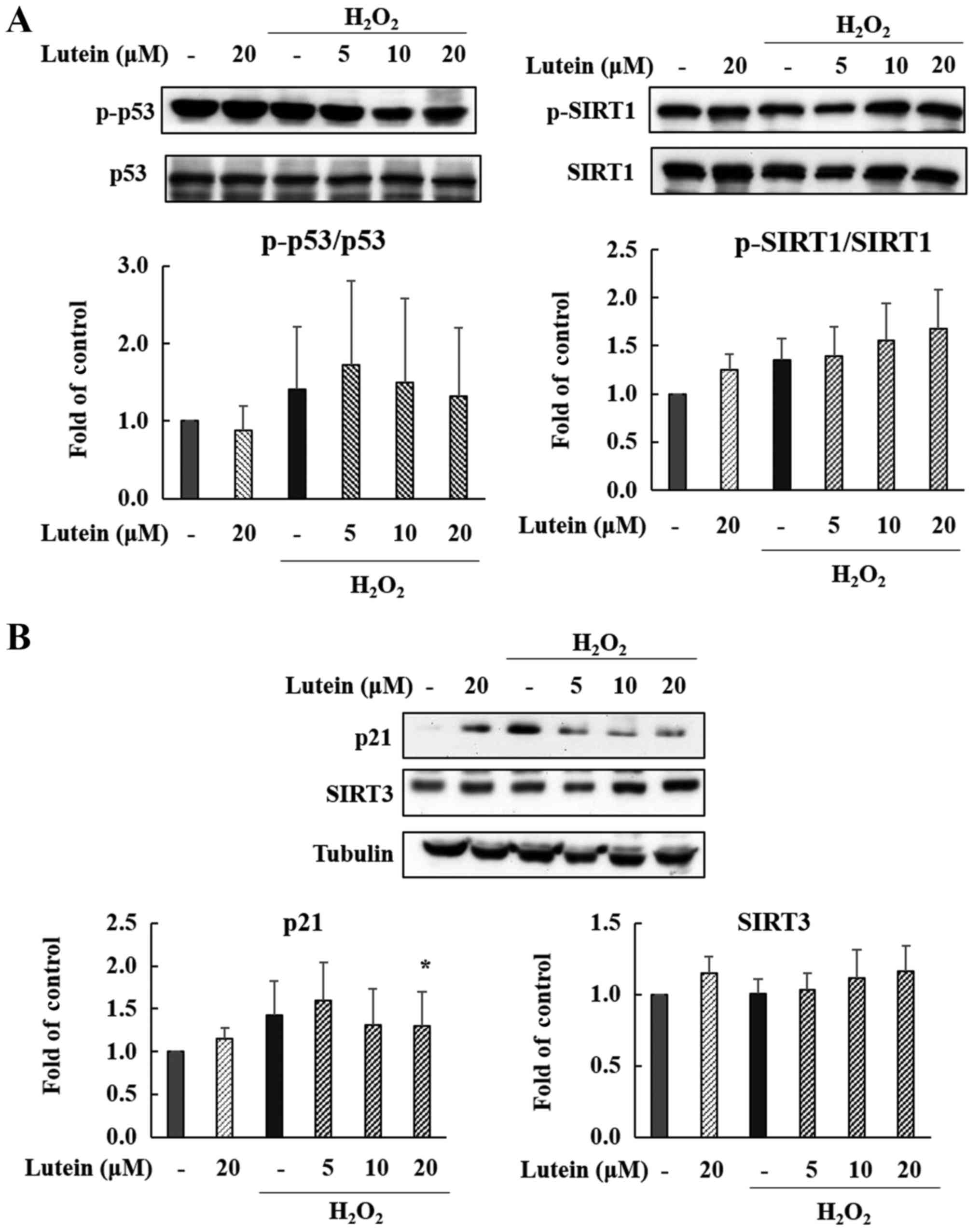Lutein protects human retinal pigment epithelial cells from oxidative stress‑induced cellular senescence
- Authors:
- Published online on: October 8, 2018 https://doi.org/10.3892/mmr.2018.9538
- Pages: 5182-5190
Metrics: Total
Views: 0 (Spandidos Publications: | PMC Statistics: )
Total PDF Downloads: 0 (Spandidos Publications: | PMC Statistics: )
Abstract
Oxidative stress‑induced cellular senescence is an important contributor to the pathogenesis of age‑related macular degeneration (AMD). Characteristics of premature cellular senescence include a loss of proliferation, change in cell shape, irreversible cell cycle arrest, and elevated senescence‑associated β‑galactosidase (SA‑β‑gal) activity. It was hypothesized that lutein may have anti‑senescence potential and may be useful as a treatment for AMD. In the present study, premature cellular senescence was induced in ARPE‑19 cells via treatment with H2O2 and the effects of lutein application were confirmed by observing cell morphology, lysosome contents, reactive oxygen species (ROS) generation and SA‑β‑gal activity, and cell cycle progression. The protein expression was also analyzed via western blotting in order to identify the affected signaling pathways. The results revealed that H2O2 treatment induced premature cellular senescence in ARPE‑19 cells, as evidenced by an increased production of ROS and SA‑β‑gal, altered lysosome contents, changed cellular morphology and arrested cell cycle progression. However, when treated with lutein, ARPE‑19 cells were effectively protected from these H2O2‑induced effects. Western blot analysis revealed that lutein induced the expression of heme oxygenase‑1, NAD(P)H quinone dehydrogenase 1, sirtuin (SIRT)‑1, and SIRT3. Together, the results indicated that lutein protects cells from cellular senescence induced by oxidative stress; therefore, it may be able to suppress the progression of AMD. In addition, our increased understanding of the pathways through which lutein acts is useful for the development of novel therapies for the treatment of oxidative stress‑associated retinal disease.















